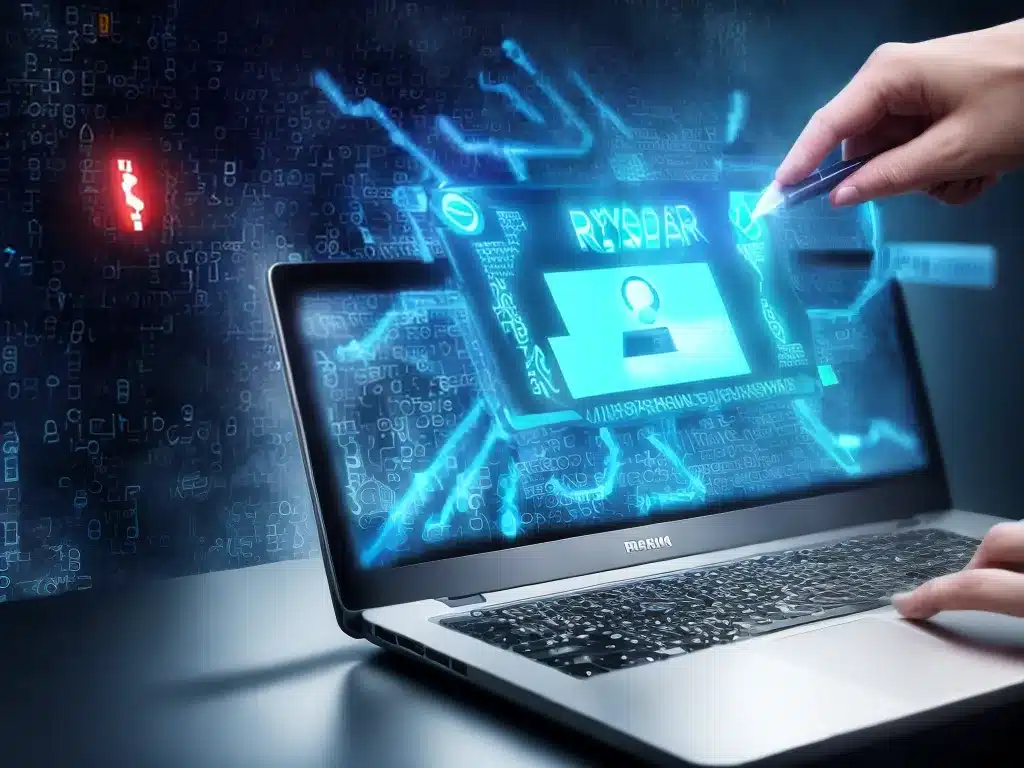
Ransomware attacks have been on the rise in recent years, with increasingly sophisticated methods of encrypting files and holding data hostage until a ransom is paid. As an individual or business owner, suffering data loss from ransomware can be devastating. However, with careful planning and the right backup strategy, the impact of ransomware can be mitigated. In this article, I will provide an in-depth look at backup strategies to prevent data loss from ransomware attacks.
Why Backups Are Critical For Ransomware Protection
Backups provide the last line of defense against ransomware. Without backups, once files are encrypted by ransomware, they are essentially lost forever unless the ransom is paid. Some key reasons why backups are so critical:
-
Restores Data: Backups allow you to restore encrypted or deleted data after a ransomware attack. This minimizes downtime and data loss.
-
Removes Ransom Leverage: If you have good backups, you don’t need to pay the ransom to get your data back. This removes the criminal’s leverage over you.
-
Allows Investigation: Backups provide options to investigate the attack and recover critical systems, rather than paying the ransom right away in a panic.
-
Provides Peace of Mind: Knowing your data is backed up and can be restored after an attack provides tremendous peace of mind.
Backup Best Practices
To leverage backups properly against ransomware, certain backup strategies should be followed:
Use Multiple Backup Types
-
Local: Use local external drives to take daily backups of important files.
-
Cloud: Maintain a cloud backup that replicates your data to an offsite location.
-
Offline: Take weekly offline backups that are air-gapped from your live environment.
Having layered backups across these options ensures alternatives if one backup is compromised.
Store Backups Separately
-
Don’t leave backups permanently connected to the live environment.
-
Rotate drives periodically.
This prevents backups from being encrypted as well during an attack.
Test Restoration Regularly
-
Test actually restoring from backups regularly.
-
Ensure speed of recovery meets needs.
-
Validate your backup integrity.
You don’t want to find out your backups were flawed when you need them urgently after an attack.
Follow the 3-2-1 Rule
The 3-2-1 rule provides a simple standard for backup robustness:
-
3 copies of your data: Your production data and at least 2 backup copies.
-
2 different media types: For example, a local drive and a cloud backup.
-
1 copy offsite: A cloud or offline backup that is kept off your live premises.
Backup Solutions Comparison
Here is an overview of popular data backup solutions, with pros and cons:
Local External Drives
- Pros: Fast recovery, under your control, offline protection.
- Cons: Manual effort, external drives can fail over time.
Cloud Backup
- Pros: Automated backups, accessibility from anywhere, data stored offsite.
- Cons: Restoration can be slow, reliance on cloud provider.
Offline Backups
- Pros: Isolated from network/malware, robust physical backup media.
- Cons: Manual process, tedious to manage backup rotations.
A combination of these backup solutions provides comprehensive protection that minimizes the business impact of ransomware attacks.
Conclusion
-
Backups should be part of every ransomware prevention strategy. They provide the last line of defense.
-
Use layered backups across local, cloud and offline media for optimum protection.
-
Follow backup best practices like the 3-2-1 rule. Test restoration regularly.
-
Modern backup solutions combine the convenience of cloud backups with the air gap benefits of offline media for more robust protection against ransomware and other threats.
By implementing the right backup strategy for your environment, you can ensure business continuity and minimize data loss in the event your business suffers a ransomware attack. Maintaining reliable backups removes the ransomware’s leverage over you while providing options to recover critical systems.












